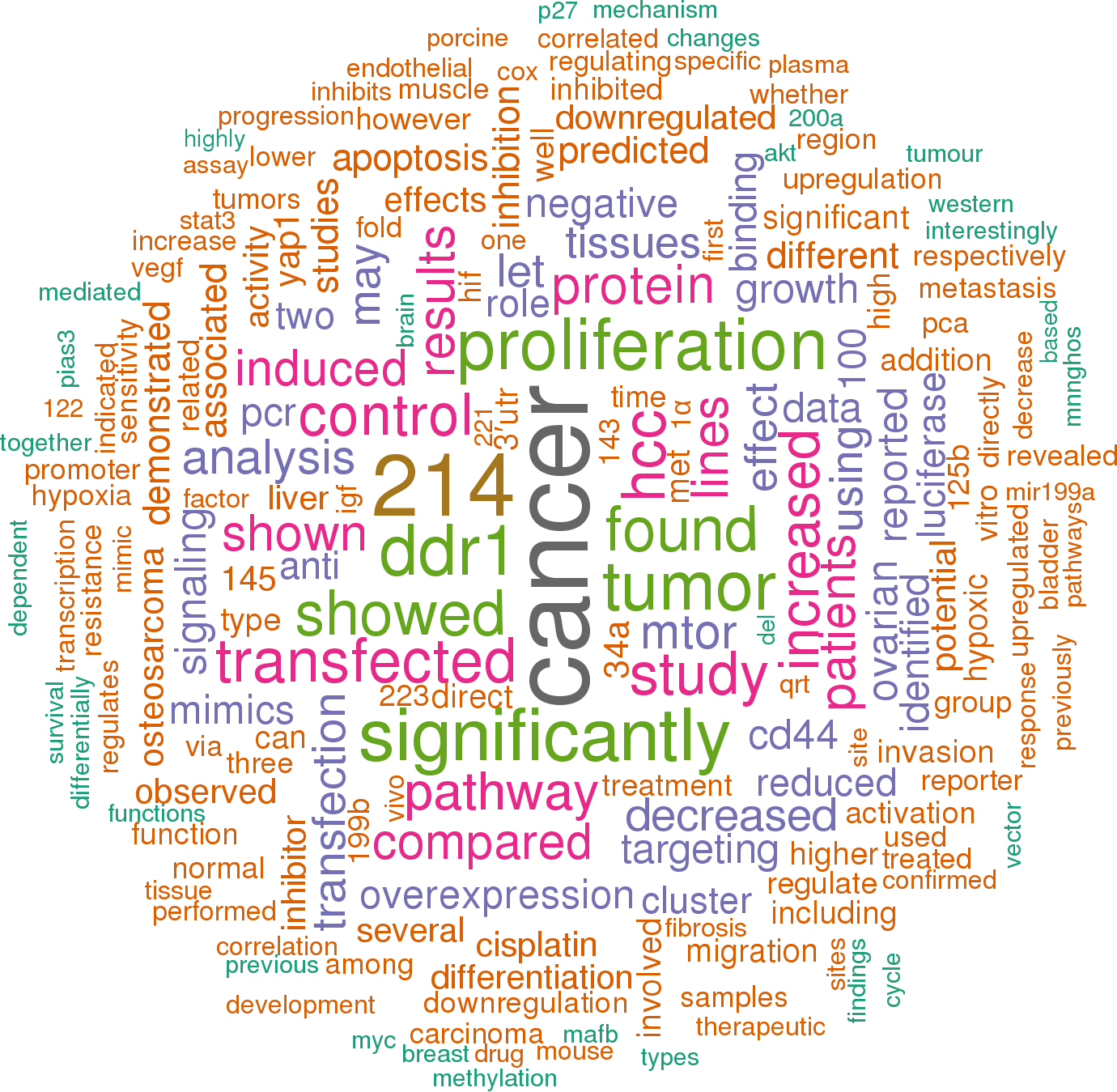Accession
MI0000281
Symbol
HGNC:
MIR199A2
Description
Homo sapiens
hsa-mir-199a-2 precursor miRNA mir-199
Gene
family?
family?
RF00144;
mir-199
Summary
Caution, this is an AI generated summary based on literature. This may have errors. ?
MIR199A2 is a gene encoding the microRNA miR-199a-3p, located on chromosome 1, which is a region frequently altered in various cancer models [PMC3281082][PMC2683874[PMC2683874]. This gene is situated in the intron region of DNM3OS and has been implicated in the regulation of gene expression, including genes with anti-apoptotic functions [PMC8326843]. The promoter region of MIR199A2 has been cloned and analyzed, suggesting that its expression can be regulated at the transcriptional level [PMC2889129'>PMC3668635][PMC2889129[PMC2889129]. In epithelial ovarian cancer (EOC) cells, MIR199A2 has been identified as responsible for hsa-miR-199a expression [PMC2889129]. Furthermore, differential methylation of MIR199A2 has been observed in a pilot study, which may contribute to its regulation [PMC4446486]. In Alzheimer's disease (AD) patients' brains, MIR199A2 was found to be upregulated; however, its exact role in AD pathology remains unclear [PMC7564652]. Additionally, restoration of MIR199A2 expression was shown to impact cell invasiveness and metastatic formation in vitro and in vivo [PMC6335767], indicating its potential significance as a therapeutic target.
Literature search

379 open access papers mention hsa-mir-199a-2
(2692 sentences)
(2692 sentences)
Sequence
3282236
reads,
10210
reads per million, 151 experiments
aggaagcuucuggagauccugcuccgucgcCCCAGUGUUCAGACUACCUGUUCaggacaaugccguuguACAGUAGUCUGCACAUUGGUUAgacugggcaagggagagca
.....(((.((.....((((((((.(((...(((((((.((((((((.(((.((((......))..)).))))))))))).)))))))...))).)))).))))))))).
.....(((.((.....((((((((.(((...(((((((.((((((((.(((.((((......))..)).))))))))))).)))))))...))).)))).))))))))).
Structure
aggaa u ggaga - c gcC U C U -- ac
gcu cu uccu gcuc guc CCAGUGU CAGACUAC UGU Ca gg a
||| || |||| |||| ||| ||||||| |||||||| ||| || ||
cga ga ggga cggg cag GGUUACA GUCUGAUG ACA gu cc a
----a - ----- a u AUU C - u ug gu
Annotation confidence
High
Do you think this miRNA is real?
Comments
Lagos-Quintana et al. [1] cloned miR-199 from human osteoblast sarcoma cells. They also reported identification of a miRNA from the opposite arm in mouse cells. This sequence was named miR-199-s and the sequence from the 3' arm of the homologous mouse precursor miR-199-as. Lim et al. [2] independently predicted this miRNA computationally using conservation with mouse and Fugu rubripes sequences [2]. Expression of the miR excised from the 5' arm was validated in zebrafish, and the ends mapped by cloning. The excised miR sequences are renamed miR-199a (to avoid confusion with the subsequently identified miR-199b (MIR:MI0000282)) and miR-199a* (from the 3' arm) here. The two putative hairpin precursors in human map to chromosome 19 (mir-199a-1, MIR:MI0000242) and chromosome 1 (mir-199a-2, MIR:MI0000281). Landgraf et al. show that both mature products are expressed, prompting the renaming to miR-199a-5p and miR-199a-3p [4].
Genome context
chr1: 172144535-172144644 [-]
Clustered miRNAs
2 other miRNAs are < 10 kb from hsa-mir-199a-2
| Name | Accession | Chromosome | Start | End | Strand | Confidence |
|---|
Disease association
hsa-mir-199a-2 is associated with one or more human diseases in the Human microRNA Disease Database
| Disease | Description | Category | PubMed ID |
|---|
Mature hsa-miR-199a-5p
| Accession | MIMAT0000231 |
| Description | Homo sapiens hsa-miR-199a-5p mature miRNA |
| Sequence | 31 - CCCAGUGUUCAGACUACCUGUUC - 53 |
| Evidence |
experimental
cloned [2-4] |
| Database links |



|
| Predicted targets |



|
Mature hsa-miR-199a-3p
| Accession | MIMAT0000232 |
| Description | Homo sapiens hsa-miR-199a-3p mature miRNA |
| Sequence | 70 - ACAGUAGUCUGCACAUUGGUUA - 91 |
| Evidence |
experimental
cloned [4], Illumina [5] |
| Database links |



|
| Predicted targets |



|
References
|



